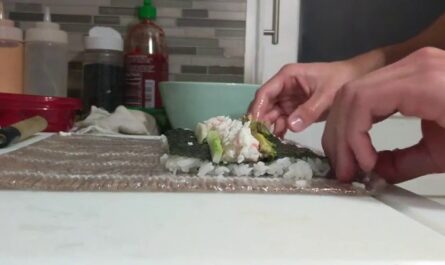Sushi is a beloved dish around the world, known for its delicate balance of flavors and textures. At the heart of every great sushi roll is perfectly prepared sushi rice. However, achieving that perfect texture and flavor can be tricky, especially for beginners. Many sushi enthusiasts often make errors that affect the final taste and texture of the rice. Here, we will discuss the 10 mistakes making sushi rice and how to avoid them.

Understanding Sushi Rice
Before diving into the common mistakes, it is crucial to understand what makes sushi rice unique. Sushi rice, also known as short-grain rice, is distinct from other rice types because of its sticky texture and slightly sweet flavor. The stickiness is essential for the rice to hold together and maintain the shape of the sushi roll.
Importance of Using the Right Rice
One of the first and most critical errors is not using the right type of rice. Many people mistakenly use long-grain or even medium-grain rice, which do not have the same sticky properties. To ensure your sushi is perfect, always opt for high-quality short-grain rice.
Not Rinsing the Rice Properly
Rinsing sushi rice is essential to remove excess starch. Failing to rinse it properly can result in clumpy and overly sticky rice, which can ruin your sushi. To rinse correctly, place the rice in a bowl with cold water and gently swish it around. Repeat this process until the water runs clear.
Incorrect Rice-to-Water Ratio
Using the correct rice-to-water ratio is crucial for cooking sushi rice. Too much water can make the rice mushy, while too little can leave it undercooked. A good rule of thumb is to use a 1:1.2 ratio of rice to water.
Skipping the Resting Period
After cooking, allowing the rice to rest is an often overlooked step. Letting the rice sit for about 10 minutes after cooking allows it to absorb the remaining moisture, resulting in the perfect texture.
Seasoning with Vinegar
Seasoning sushi rice with vinegar, sugar, and salt gives it the signature taste. However, many make the mistake of adding the vinegar mixture when the rice is too hot, causing the rice to become too sticky. Instead, let the rice cool slightly before mixing in the vinegar.
Using the Wrong Vinegar
Using the wrong type of vinegar can drastically alter the taste of the sushi rice. Always use rice vinegar, as it has the perfect balance of acidity and sweetness required for sushi.
Improper Mixing Technique
Mixing the rice and vinegar should be done with care. Use a slicing motion with a wooden spatula to avoid crushing the rice grains, which can lead to a mushy texture.
Temperature Matters
Sushi rice should be used at room temperature. Using rice that is too hot or too cold can affect the texture and taste of the sushi roll.
Storing Sushi Rice
Proper storage of sushi rice is important to maintain its quality. Sushi rice should be used on the same day it is prepared. However, if you need to store it, keep it at room temperature covered with a damp cloth. Avoid refrigerating as it can make the rice hard.
Overworking the Rice
Handling sushi rice too much can make it overly sticky. When forming your sushi rolls, be gentle to maintain the rice’s delicate texture.
Conclusion
Making the perfect sushi rice requires attention to detail and practice. By avoiding these common mistakes, you can elevate your sushi-making skills and create delicious, restaurant-quality sushi at home. Remember, the key is in the details, and with time, you’ll master the art of sushi rice preparation.

FAQs
1. Can I use any type of rice for sushi?
No, it is best to use short-grain rice for sushi due to its sticky texture.
2. How do I know if I’ve rinsed my rice enough?
The water should run clear when you’ve rinsed the rice properly.
3. Can I make sushi rice ahead of time?
It’s best to use sushi rice the same day it’s made, but if needed, you can store it at room temperature covered with a damp cloth.
This article contains affiliate links. We may earn a commission at no extra cost to you.




